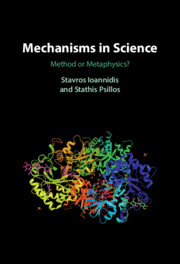Book contents
- Mechanisms in Science
- Mechanisms in Science
- Copyright page
- Dedication
- Contents
- Figures
- Preface
- Introduction
- Part I Ideas of Mechanism
- Part II Causation and Mechanism
- Chapter 3 Mechanisms in Scientific Practice
- Chapter 4 Mechanisms as Causal Pathways
- Chapter 5 Mechanisms, Causation and Laws
- Chapter 6 Against Activities
- Chapter 7 Whither Counterfactuals?
- Part III Beyond New Mechanism
- Finale
- References
- Index
Chapter 3 - Mechanisms in Scientific Practice
The Case of Apoptosis
from Part II - Causation and Mechanism
Published online by Cambridge University Press: 09 June 2022
- Mechanisms in Science
- Mechanisms in Science
- Copyright page
- Dedication
- Contents
- Figures
- Preface
- Introduction
- Part I Ideas of Mechanism
- Part II Causation and Mechanism
- Chapter 3 Mechanisms in Scientific Practice
- Chapter 4 Mechanisms as Causal Pathways
- Chapter 5 Mechanisms, Causation and Laws
- Chapter 6 Against Activities
- Chapter 7 Whither Counterfactuals?
- Part III Beyond New Mechanism
- Finale
- References
- Index
Summary
In Chapter 3 we present the first main part of our case for Causal Mechanism, by discussing in detail apoptosis, a central biological mechanism. We examine how John Kerr and his co-workers first introduced apoptosis in 1972. We then present the most important stages in scientific research regarding apoptosis during the last decades that led to its identification as a central biological mechanism, explaining the shift from morphological descriptions to biochemical descriptions of the mechanism. We generalise the molecular definition of a pathway to arrive at a more general notion of a causal pathway. We also show that several distinctions used by biologists in order to differentiate between causal pathways and identify the genuine biological mechanisms (active vs passive, programmed vs non-programmed, physiological vs accidental) do not correspond to internal features of causal pathways, but concern an external feature, that is, the role those processes play within the organism.
Keywords
- Type
- Chapter
- Information
- Mechanisms in ScienceMethod or Metaphysics?, pp. 61 - 89Publisher: Cambridge University PressPrint publication year: 2022

